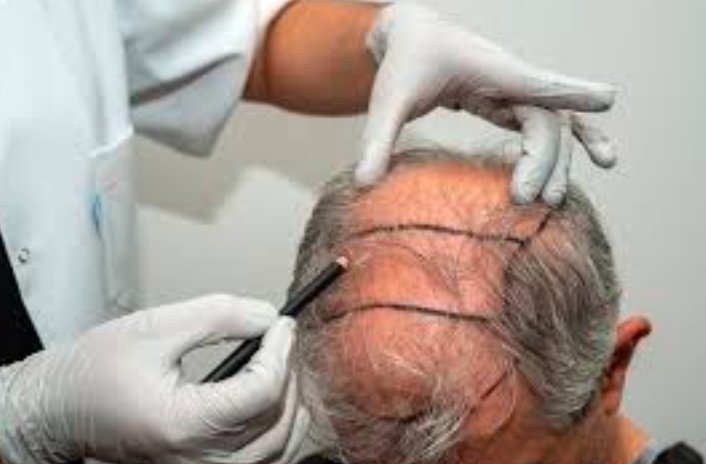Demand for hair restoration procedures in Scotland has spiked this year, leading to higher costs as more people seek solutions for thinning hair. Experts now share what patients should know about pricing, options, and outcomes to make smart choices amid the rising trend.
Why Costs Are Climbing in Scottish Clinics
Scotland sees a growing number of men and women turning to hair transplants to boost confidence and address hair loss. This surge stems from better awareness of treatments and advances in techniques that promise natural results. In major cities like Edinburgh and Glasgow, clinics report full schedules, which pushes prices up due to high demand and limited spots for skilled surgeons.
Patients often start their journey with concerns about affordability. Recent data shows the average procedure now ranges from 3000 pounds to over 10000 pounds, depending on needs. This increase ties to inflation in medical services and the cost of advanced equipment used in modern clinics. For instance, smaller towns might offer deals around 2500 pounds for basic work, but urban centers charge more for premium care.
Experts point out that while prices rise, the value remains strong for those who choose wisely. Many patients report feeling more self-assured after treatment, which helps in social and professional settings. This emotional lift makes the expense feel justified over time.

Key Factors That Shape Hair Transplant Pricing
Several elements determine the final bill for a hair transplant in Scotland. Understanding them helps patients budget and pick the right plan.
The number of grafts needed tops the list. Each graft holds one to four hairs, and more extensive bald areas require thousands, driving up the cost. For a simple hairline fix, you might need 500 to 1000 grafts, while full crown coverage could demand 3000 or more.
Surgeon skill and clinic setup also matter. Top-rated places with experienced doctors charge extra for their precision and modern facilities. Location plays a part too, with Edinburgh and Glasgow spots often 20 percent higher than rural ones due to overheads.
Here are the main factors in bullet points:
- Treatment area size: Small spots like temples cost less than large zones like the crown.
- Graft count: Prices often run 3 to 7 pounds per graft, so 2000 grafts could total 6000 to 14000 pounds.
- Aftercare inclusions: Packages with follow-ups and products add value but can raise the base price.
- Patient health: Those with strong donor areas might finish in one session, saving money on multiples.
To illustrate, consider this table of typical costs based on graft numbers from leading Scottish clinics:
| Grafts Needed | Estimated Cost (Pounds) | Procedure Type Example |
|---|---|---|
| 500-1000 | 2500-5000 | Hairline refinement |
| 1000-2000 | 5000-10000 | Mid-scalp restoration |
| 2000-3000 | 10000-15000 | Full crown coverage |
These figures come from recent clinic quotes and show how scale affects the total.
Comparing FUE and FUT Methods for Best Results
Choosing between Follicular Unit Extraction and Follicular Unit Transplantation shapes both cost and recovery. FUE leads the pack in Scotland for its minimal scars and quick heal time, but it takes longer in surgery, so prices sit higher at 4 to 7 pounds per graft.
FUT involves taking a strip of scalp from the back, which yields more grafts faster and costs less, around 3 to 5 pounds per graft. It suits those needing big coverage but leaves a line scar, best hidden under longer hair. Many patients pick FUE for active lifestyles, as they return to work sooner.
Doctors stress matching the method to your hair type and goals. For curly or coarse hair, FUE shines in blending naturally. Recent trends show a shift to robotic-assisted FUE in top clinics, which boosts precision but adds to the bill. Patients share stories of smooth experiences, with one noting full results in six months after 3750 grafts for under 4300 pounds.
Both options promise lasting hair, as transplanted follicles resist the hormones behind loss. This durability beats ongoing meds that cost hundreds yearly.
Patient Stories and Clinic Choices in Scotland
Real experiences from Scots highlight the pros of local treatments over overseas trips. While Turkey tempts with low prices, many prefer home for safety and follow-up ease. Clinics like those in Glasgow earn rave reviews for natural looks and supportive staff.
One patient described his 3986-graft FUE at a Glasgow spot as life-changing, with zero downtime issues. Reviews average five stars, praising detailed consultations that set clear expectations. Edinburgh centers focus on personalized plans, often including stem cell boosts for denser growth.
Top picks include spots with over 8000 procedures done, offering free evals and finance plans. These spread payments over months, making it doable for average earners. Trends in 2025 lean toward add-ons like laser therapy for faster recovery, which patients say cuts swelling and speeds regrowth.
Balance comes from weighing risks. Not all qualify right away; docs advise waiting for stable loss to avoid repeat work. This step ensures better outcomes and saves cash long-term.
The Long-Term Value and Next Steps for Patients
Hair transplants stand out as a one-time fix with lifelong perks, outpacing wigs or pills in value. Transplanted hair grows strong, boosting self-image and cutting stress from appearance worries. In Scotland, where mental health ties to looks, this gain feels huge.
Financing eases the hit, with plans from zero interest options. Experts urge starting with a consult to check donor strength and map a path. This avoids surprises and aligns treatment to your life.
As demand grows, transparency rules. Clinics now detail all fees upfront, building trust. For those eyeing this, book a session soon to lock in current rates before further hikes.
Share your thoughts on hair restoration in the comments below, and pass this article to friends facing similar choices.


















